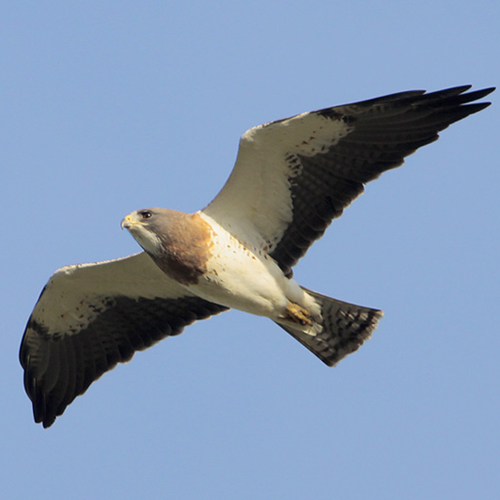General Description
The Swainson's Hawk is a slender buteo, similar in length to the Red-tailed Hawk, but with a longer wingspan and weighing about 20% less. The pointed wings are held in a strong dihedral in flight. There are three different color phases, light, dark, and intermediate (or rufous), all of which occur in Washington. Pairs are often of mixed color phases. Light-phase adults have a white or mostly white belly, with matching underwings. They have rufous breasts, or bibs, that contrast sharply with their white bellies. The head is dark with white surrounding the bill, extending down to the throat and up to the eyes. The back is solid dark brown. Dark adults are almost solid dark brown with rufous on the belly and underwings. Intermediate plumages fall along a continuum between dark and light phases. All adults have dark flight feathers. Juveniles are generally mottled versions of the adults, with the juvenile of the light phase having a fairly white head at times.
Swainson's Hawks are Uncommon visitors in Western Washington from March-May.Habitat
Swainson's Hawks forage in open farmland, sagebrush desert, or prairies. Compared to Ferruginous Hawks, Swainson's inhabit moister areas. They nest in wooded groves along streams, windbreaks, or other treed or brushy areas near open habitats, often building nests in introduced locust or cottonwood trees. During migration they are often found in grasslands and harvested fields.
Behavior
During migration, Swainson's Hawks often stop over at recently tilled fields, where insect larvae have been brought to the surface by plowing. In these instances, large flocks can be seen foraging on the ground. They also hunt by soaring over open areas, scanning the ground for prey. They have been known to congregate at the leading edge of a grassfire, waiting for prey to be driven into the open by the oncoming flames.

No comments:
Post a Comment